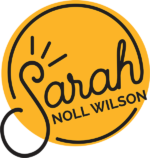
When was the last time you said yes but didn’t mean it? Have you ever agreed or acquiesced not because you wanted to, but rather because you wanted out of a conversation or interaction? Ever felt overwhelmed or caught off guard, so you just went with the flow? Though we most often hear about fight or flight as stress responses, they aren’t the only ones. What I described is a fawn response, the next in our stress response series. (So far, we’ve covered fight, flight, and freeze. I invite you to check those out if you haven’t already.)
Stress responses aren’t things we can stop, remember, but they are things we can manage. This is important when it comes to both self-care and workplace performance. When we know better, we can do better.
Let’s explore the fawn response together in depth–what it is, how it can manifest, and what we can do about it to set healthier boundaries.
The Fawn Response in the Workplace
A fawn response happens almost exclusively when there’s a power differential. You may experience it when dealing with anyone with whom you have a relationship rooted in respect (or even fear): a boss, a team lead, a parent, a friend, etc. You might think, “I hold so much respect for you/fear of you that I just don’t want to argue,” or “I won’t win this anyway and don’t want the consequence of how that conversation might end, so I’m going to nod until we’re done here,” or “the heat is so high right now that I will do or say whatever I need to in order to make it stop.”
Here’s a super basic example to lay the groundwork here: say you have a friend who loves horror movies, but you hate horror movies. You really don’t want to lose that friendship, so you just . . . watch the horror movies. Is that fun for you? Probably not. Is that fair to your friend, who thinks you are sharing that passion? Also, probably not. A key differentiator of the fawn response compared to the other four is that particular and specific fear of/aversion to the consequence. (That’s important, and we’re going to keep coming back to it.)
Now, let me tell you a personal story to illustrate how this can look: as a first year teacher, I was terrified of the principal. She held so much power over me as a brand new professional, and I really didn’t want to cross her. Right or wrong, this was the reality of the situation. Whenever I saw her, I did whatever I had to do in order to leave that interaction as quickly as possible, which usually meant agreeing with whatever was said.
I see this often now with some of my clients; they defer to the person with social influence, the person who is in charge, or the person who is the loudest in the room. Say one of those people comes to them with an idea, or presents an idea in a meeting asking for feedback, and they think that idea is terrible. I mean, really . . . just the pits. But also, they don’t want to be put on the spot, they don’t feel safe enough to suggest pumping the brakes or offering a different perspective, and/or they worry about the ramifications of responding in earnest in the moment.
This can also manifest in the form of pressure and deadlines. Have you ever been asked to turn something around quickly, change a schedule, or overload your plate and then agreed to it on the spot? And you agreed to it knowing all the while it would mean you have to push other projects to the side, miss your kid’s sporting event, or otherwise make a sacrifice? This is also how a fawn response can show up; we’re so afraid of the consequence that we don’t hold proper boundaries.
In either case, the person with the power gets what amounts to a dirty yes, and the person without the power gets what they wanted but maybe not what they needed: for the whole thing to be over and free of the possibility of said consequence, real or perceived.
Nobody wins in this situation, ultimately. A dirty yes can erode trust quickly, and not feeling like you can’t say what you really think or advocate for yourself can signal the trust wasn’t all that strong in the first place.
What, then, can we do about it? Let’s take a look.
Strategies for Moving Forward
If you can identify with some of the examples above and recognize that you’re prone to the fawn response, having some statements that live in your brain at-the-ready can help diffuse the tension and quickfire tendency, buying you more time. You might use one of the following or make your own:
- “I am so focused on this other project right now but want to circle back about this tomorrow.”
- “I’m going to need some more time to think about that. Can we put it first on the agenda for next time?”
- “Interesting! I need to understand a little better, though. Can you tell me more?”
- “I can hear the excitement in your voice! Can you walk me through how you got from A to B?”
This last question illustrates a couple of good strategies to put in your back pocket now and just in general: first, it never hurts to get curious, as we so often speak about in this work. When you don’t know what to do, it’s okay to ask a question. It also points to the up side of the fawn response: you can still maintain the positive nature of your relationship, or even build upon it, by leading with something like, “I see how important this is to you.” You’re having an interaction with a human who has an idea, not an idea with a human attached. Lead with the human piece–another core tenant of this work–then set your boundary.
If you’re the power-holder, I invite you to have a different set of statements that live in your brain at-the-ready:
- How can I make it okay for people to disagree with me?
- How do I create an environment in which that can happen and is repeatable, at work or in a relationship?
- How can I forge a space where even if I’m frustrated or feeling triggered, I’m still open to receiving actual feedback and not just validation?
- How can I tell if I’m getting dirty yesses, and what do I say to myself in the moment to pull it back?
One of our clients is a leader on a team that oversees a large retail system. His focus is on building a culture where people can disagree with him respectfully and without repercussions. (Remember that consequence piece?) This is one of the most essential actions he’s taken in his role leading teams because not only is he establishing trust, but both the team’s output and culture are stronger for it.
What’s Next?
We can’t stop ourselves from fawning, but we can recognize we’re doing it, make a different choice in the moment, and build our “hold steady in discomfort” muscle. Growth happens that way, after all: a little bit at a time, interaction by interaction.
How does a fawn response usually show up for you? If you’re a leader, how do you typically spot dirty yesses, and what do you do about them? Tell me in the comments so we can all learn from one another, and stay tuned for the last article in this series where we’ll cover the flock response.

Dr. Teresa Peterson
Dr. Teresa Peterson is the Director of Learning and Development for Sarah Noll Wilson, Inc. In her daily work, she serves as Sarah’s key content collaborator. Teresa enjoys facilitating, researching, and is passionate about applying best practices for learning to make our experiences meaningful, engaging, and accessible for all types of learners. Teresa holds a Doctorate in Education from the University of Northern Iowa and brings over twenty years of experience teaching, facilitating, and leading to our team. Our clients love Teresa’s grounded energy, depth of thought, and ability to listen deeply.

